10 classic Old Hollywood movies for beginners
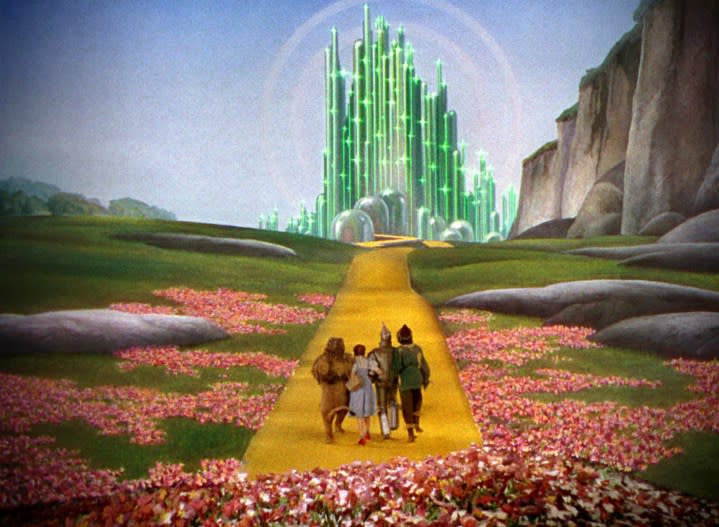
The classics are classics for a reason, with many of the most important and influential movies ever made emerging out of the Golden Age of Hollywood. Spanning from the 1920s to the early 1960s, these foundational works would go on to shape and define what modern Hollywood and filmmaking, in general, would look like. For anyone interested in these critical masterpieces, there are a few that should be considered essential viewing.
From the fantastical The Wizard of Oz to the romantic Casablanca, the best Old Hollywood movies for beginners are crucial, yet approachable works that are still widely celebrated and referenced today. These 1o films in particular are timeless classics that capture the spirit of Hollywood’s golden age, easily transporting audiences to a different time.
Gone with the Wind (1939)
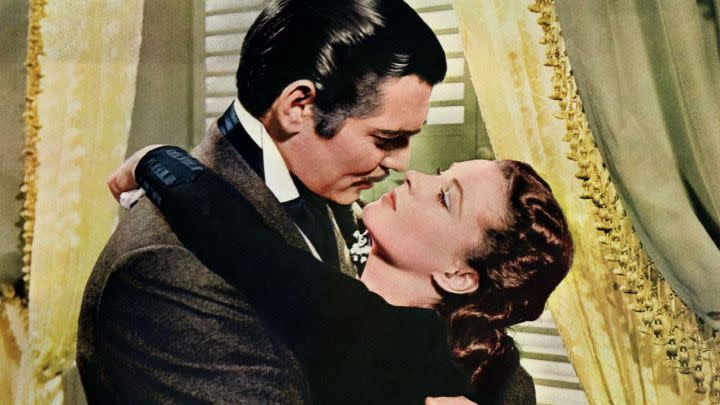
Set against the backdrop of the American Civil War and Reconstruction era, Gone with the Wind is an epic tale that primarily follows Scarlett O’Hara (Vivien Leigh), the strong-willed daughter of a wealthy plantation owner in Georgia. It depicts her failed pursuit of a romance with Ashley Wilkes (Leslie Howard), who is already married to his cousin, and then her relationship with Rhett Butler (Clark Gable). Scarlett and Rhett’s marriage proves to be tumultuous as she continues to pine for Ashley despite having her own family.
Director Victor Fleming’s adaptation of Margaret Mitchell’s 1936 novel certainly tries to do its sweeping story justice with the film’s nearly four-hour runtime, making it one of the longest Hollywood movies ever made. It’s, of course, worth noting that its controversial portrayal of the Antebellum South and slavery has aged poorly, though it can’t be denied that the film still provides a fascinating glimpse into the filmmaking techniques and cultural attitudes of the 1930s. Plus, Gable’s infamous “Frankly, my dear, I don’t give a damn,” is a line that has become a permanent part of cinematic history.
West Side Story (1961)

Before Steven Spielberg‘s 2021 version, there was the renowned 1961 film from directors Robert Wise and Jerome Robbins, which still holds the record for the most Oscar wins for a musical. The modern retelling of William Shakespeare’s Romeo and Juliet transports the story to the gritty streets of 1950s New York City, where there’s an intense rivalry between two teenage street gangs: the Jets, a group of white youths led by Riff (Russ Tamblyn), and the Sharks, a Puerto Rican gang led by Bernardo (George Chakiris). Amid the chaos, a forbidden romance blooms between Tony (Richard Beymer), a former Jet, and Maria (Natalie Wood), Bernardo’s sister.
West Side Story won 10 Academy Awards, including Best Picture, and immediately set a new standard for musicals. It modernized the Shakespearean tale with clever lyrics and dazzling numbers, with each set piece boasting great production value. On top of all that, the 1961 movie would offer an insightful look at current issues like racism and the death of the American dream, punctuated by the main characters’ tragic fates.
It’s a Wonderful Life (1946)

It’s a Wonderful Life is a timeless holiday classic that some families likely still watch on Christmas Eve. Directed by Frank Capra, the 1946 film tells the poignant story of George Bailey (James Stewart), a kindhearted man who on Christmas Eve, faces a financial crisis that could lead to his arrest. As he contemplates suicide, the angel Clarence Odbody (Henry Travers) intervenes by showing George how different the world would be if he had never been born.
Both a tear-jerking and uplifting classic, It’s a Wonderful Life highlights the value of the small things people do through George’s touching story. As the protagonist realizes the profound impact he has had on the lives of those around him, he discovers how important his own existence truly is. It’s a heartwarming realization that only grows as the townspeople come together to support the character, offering a wholesome and inspiring conclusion to a story that’s bound to be cherished for generations to come.
Sunset Boulevard (1950)
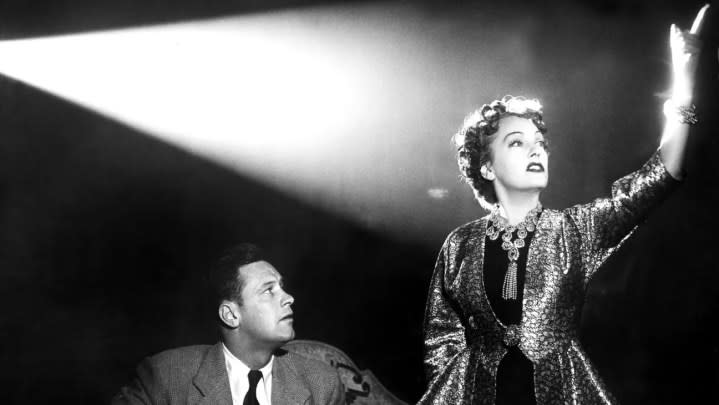
Hollywood can often be at its best when critiquing itself, and there’s no better classic example of this than director Billy Wilder’s Sunset Boulevard. Both a black comedy and film noir, the 1950 movie portrays the wild story of struggling screenwriter Joe Gillis’ (William Holden) unexpected encounter with the forgotten silent film star Norma Desmond (Gloria Swanson). Norma is convinced she can make a comeback, so Joe agrees to edit her convoluted screenplay, hoping to manipulate her in the process. He ends up getting more than he bargained for.
Sunset Boulevard is an excellent depiction of Hollywood at its worst, with the sardonic and satirical movie underscoring the pitfalls of fame and obsession. Norma’s delusional world is made believable by a mesmerizing performance from Swanson, whose unhinged character captures the spirit of the unforgiving and constantly changing industry. How much are celebrities willing to give to hold on to their stardom? At least for Norma Desmond, anything is worth it for her next “close-up.”
Singin’ in the Rain (1952)
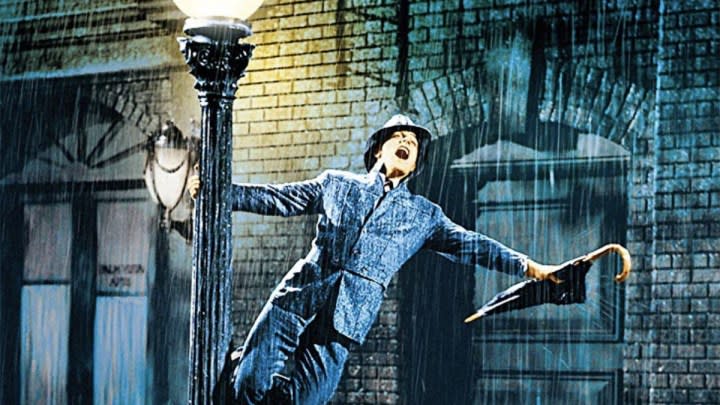
One of the biggest shifts in Hollywood was the transition from silent films to “talkies” or “sound films,” and some of the challenges that change presented are expertly captured in 1952’s Singin’ in the Rain. Directed by Gene Kelly and Stanley Donen, the musical is centered on Don Lockwood (Kelly), a dashing silent film star, whose career is threatened by the advent of sound. Alongside his best friend, Cosmo Brown (Donald O’Connor), and love interest, Kathy Selden (Debbie Reynolds), he tries his best to adapt to the new technology. A major subplot involves Lina Lamont (Jean Hagen), Don’s co-star with a shrill voice unsuitable for talkies, which complicates their latest film project. The solution? Kathy dubs Lina’s lines, which doesn’t go too smoothly.
Still considered one of the best musicals ever made, Singin’ in the Rain is an excellent introduction to Old Hollywood, what with its sharp yet comedic look at a pivotal moment in cinema history. It has also just aged like fine wine, thanks to its iconic musical numbers that are still a marvel to watch for the first time today. This certainly includes Kelly’s spontaneous dance in the pouring rain, which was flawlessly shot and choreographed, ultimately becoming synonymous with the film itself.
Citizen Kane (1941)

“Rosebud.” That word would have an indelible effect in cinematic history, with Charles Foster Kane (Orson Welles) now remembered as one of the most important characters in film. The quasi-biographical movie also directed by Welles chronicles the titular protagonist’s life as a wealthy and influential newspaper magnate, with the story told as a series of flashbacks triggered by that mysterious final word. Reporter Jerry Thompson (William Alland) makes it his mission to understand the meaning of “Rosebud,” interviewing those who knew Kane intimately, including his best friend and wife.
Citizen Kane‘s narrative and visual techniques may be common now, but it was the pioneer that helped make what are now tropes possible in filmmaking. From its use of nonlinear storytelling and groundbreaking expository devices to its deep-focus cinematography and distinct lighting, the 1941 movie would influence countless filmmakers and reshape the future of cinema. That’s not even mentioning its innovative character-driven story that would embrace existentialism while serving as a scathing critique of media sensationalism.
Lawrence of Arabia (1962)
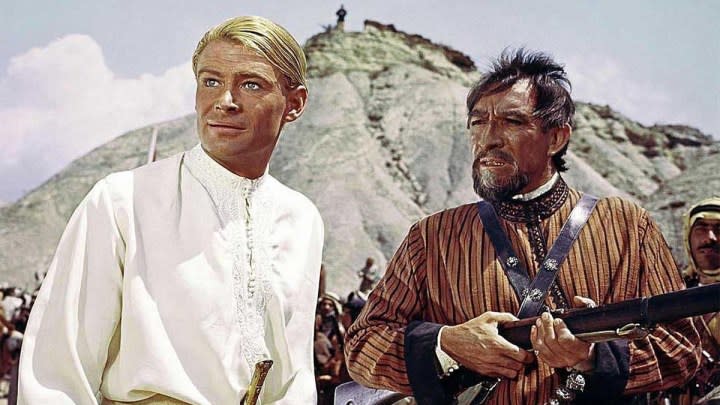
Director David Lean produced one of the greatest epics of all time with 1962’s Lawrence of Arabia, which chronicles the life of real-life historical figure T.E. Lawrence (Peter O’Toole). The British Army officer emerged as a legend after his actions during World War I, where he was initially assigned to assess the prospects of Prince Faisal’s (Alec Guinness) revolt against the Turks. Embracing the Arabian culture and demonstrating exceptional leadership, Lawrence unites the diverse Arab tribes and leads them in guerrilla warfare against the Ottoman Empire.
Lawrence of Arabia vividly captures the protagonist’s transformation from just another soldier to a larger-than-life leader, with O’Toole being impeccably cast as the complicated character. His story unfolds against awe-inspiring pre-CGI set pieces, with thousands of extras and meticulous craftsmanship going into ensuring that each frame lives up to the gravity of the film’s powerful story. Its technical brilliance guarantees that the movie will continue to enjoy its legacy as a timeless epic with a monumental scale that’s nearly impossible to replicate.
Psycho (1960)
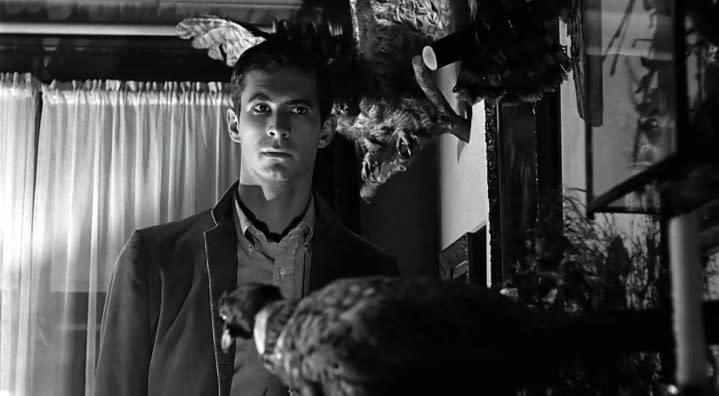
Psycho is a landmark in both the horror genre and cinema as a whole. Director Alfred Hitchcock‘s most famous and important work begins with a fleeing secretary, Marion Crane (Janet Leigh), who embezzled money from her employer in hopes of starting a new life with her boyfriend. While on the run, she stops at the Bates Motel, managed by the strange Norman Bates (Anthony Perkins), who lives with his domineering mother in the house overlooking the motel. It soon becomes clear that resting there was a mistake.
There was horror before Psycho, and then there was horror after, with the 1960 film pushing the limit as to what kind of sexuality, deviance, and violence could be portrayed on the big screen. It would also have a ripple effect on the genre, as seen in the subsequent narratives and techniques that would take direct inspiration from the film. Hitchcock’s direction would elevate Psycho to legendary status, with the filmmaker infusing every second with palpable suspense and an eerie atmosphere that makes its most shocking moments even more effective. Many of these would become mainstays in popular culture, including the infamous shower scene.
The Wizard of Oz (1939)
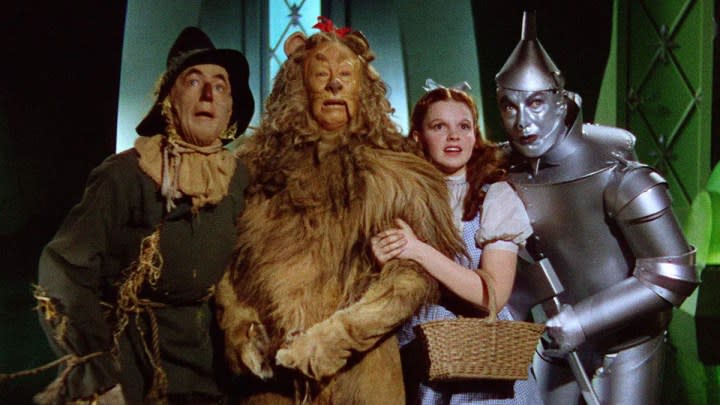
Director Victor Fleming’s The Wizard of Oz is a beloved classic that redefined fantasy filmmaking. It follows Dorothy Gale (Judy Garland), a young girl from Kansas who is swept away by a tornado to the magical land of Oz. There, she tries to find the Wizard of Oz (Frank Morgan) to help her return home while making new friends along the way in the Scarecrow (Ray Bolger), who wants a brain; the Tin Man (Jack Haley), who desires a heart; and the Cowardly Lion (Bert Lahr), who seeks courage. Together, they walk down the Yellow Brick Road, soon meeting the Wicked Witch of the West (Margaret Hamilton).
The Wizard of Oz may not have been the first film to use Technicolor, but it was definitely the one that brought it to a wider audience and signaled a new era in cinema. Within the award-winning fantasy movie’s visually striking world is an equally impressive tale of courage and friendship, with Judy Garland’s performance, particularly her rendition of Over the Rainbow, quickly becoming a cornerstone of that era of Hollywood. It may have premiered in 1939, but modern audiences may be surprised to find themselves touched and delighted by Oz’s lasting magic.
Casablanca (1942)
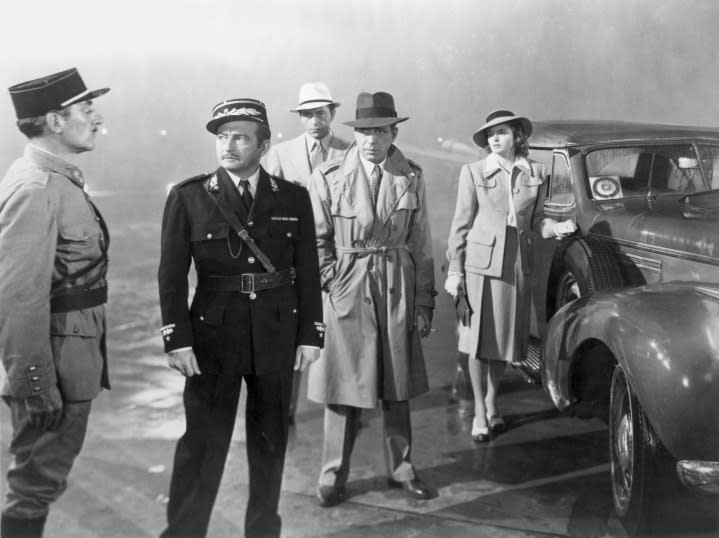
“Here’s looking at you, kid.” Over 80 years after it was first shown, Casablanca is still one of the most quotable, well-written, and romantic movies ever. Set during World War II, the film follows Rick Blaine (Humphrey Bogart), an American expatriate who owns a nightclub in the titular Moroccan city. His world is turned upside down when his former lover, Ilsa Lund (Ingrid Bergman), walks into his club with her husband, Victor Laszlo (Paul Henreid), a renowned resistance leader. Ilsa and Victor are seeking safe passage to America to continue their fight against the Nazis, and Rick holds the key to their escape.
Casablanca is the perfect example of one of those lightning-in-a-bottle types of movies where everything comes together at the exact moment to create a masterpiece. The screenplay is flawless, the chemistry between Bogart and Bergman is incredible, and the timing is just right. Rick’s moral dilemma about his choices during the war and the drama of the love triangle that he couldn’t avoid were gripping then and continue to make the classic a must-see today. This is especially true for viewers who are just getting into the greatest hits of the Golden Age of Hollywood, as Casablanca should be on the top of that watchlist.
